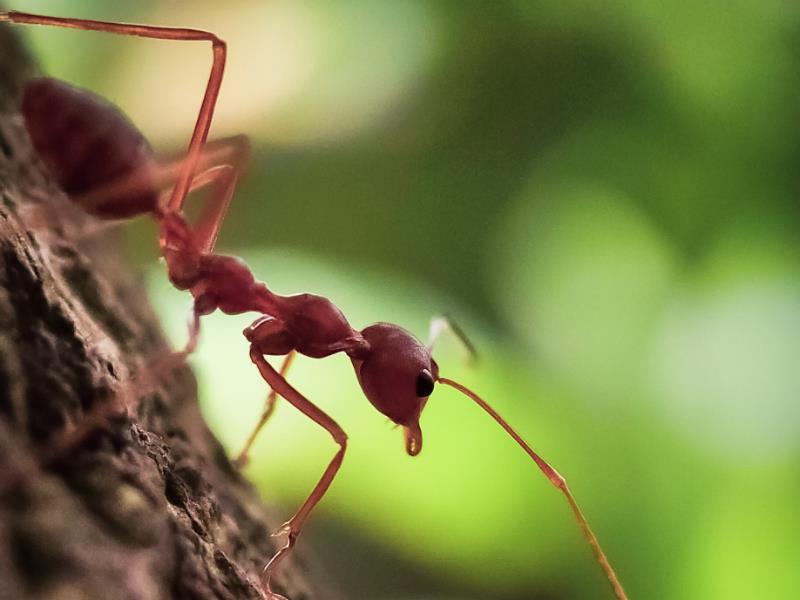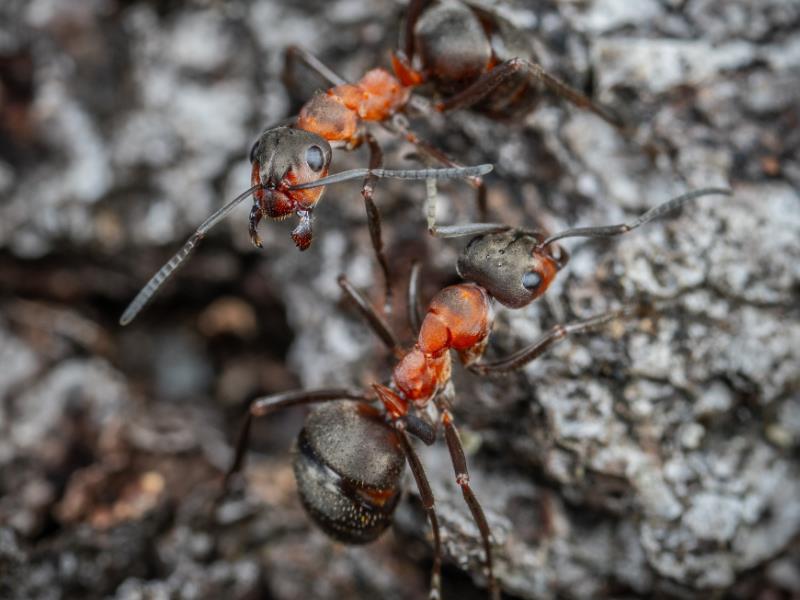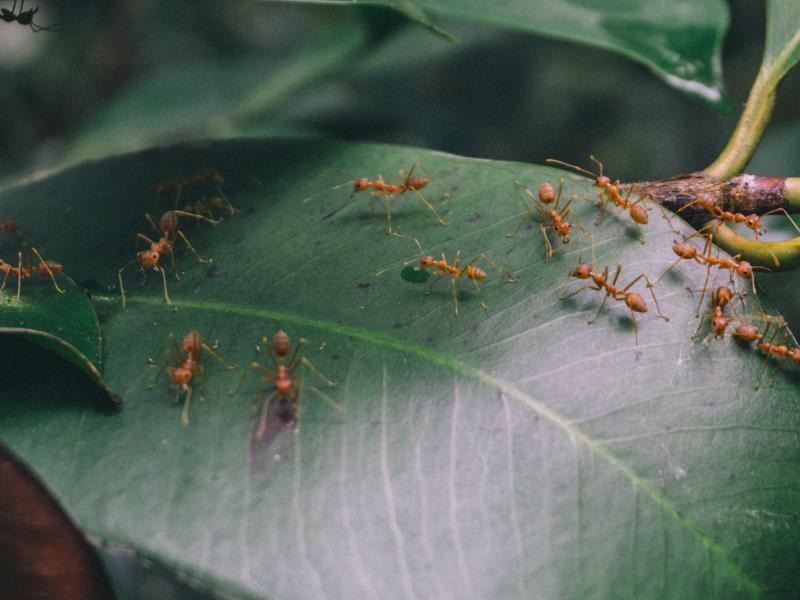‘Fire ant’ is the common name given to several species in the genus Solenopsis. The genus includes 200 species of stinging ants, and many of the common names of these ants reflect their painful bite. However, some of the common names applied to the ants in this genus, such as ‘red ants’, are also used extensively to refer to ants of other genera, such as the Myrmica rubra and the Pogonomyrmex barbatus.
The term ‘fire ants’ specifically is also used to name red, painful ants
from other genera. Some examples of this include the Oecophylla weaver
ants and the Wasmannia Auropunctata, the latter of which is specifically
the ’little fire ant’.
Fire ants are native to South America, and are commonly found in
countries such as Uruguay, Brazil, and Argentina. They have spread to
numerous other continents, however, and are now seen in different
environments around the world. They were first seen in Brisbane in 2001,
and the Queensland Government has since taken radical measures to
attempt to control the local fire ant population.

Fire ants have a distinctive red hue, and this can result in other red ants being misnamed as fire ants
What Do They Look Like?
Fire ants share their anatomy with that of other ants, as well as most typical insects. Their bodies are divided into three, with a section for the head, thorax, and abdomen. They have three pairs of legs they use for movement, as well as a pair of antennae with ten segments and a twice-segmented club.
Notably, fire ants derive their name, in part, from their bold colouring. They are typically a bright red colour, though the worker ants can take on a black tint. Fire ants are small, ranging in size from 2 to 6 millimetres.
When Are They A Threat?
Fire ants are not only an invasive species, but also an incredibly persistent one. They are able to survive in extreme conditions that would have seen other ants perish, and they spread at an extreme rate. As a consequence, they have established a foothold in various regions of Queensland. It is required of all Queensland residents that any fire ant sightings be reported to the state government within 24 hours as part of the National Red Imported Fire Ant Eradication Program.
How Do They Form New Nests?
Fire ant colonies are formed after the nuptial flight of a reproductive female queen. Worker ants will mate with the queen until she becomes pregnant, and the male that successfully impregnates the queen will be banished from both the new nest as well as his original colony. Consequently, the male will then soon die.
Fire ants seek out moist patches of soil, such as those found near rivers, lakes, and in well-watered lawns. While the fire ants prefer to nest under the cover of low objects, such as timber, rocks, or bricks, they can build mounds to protect their colony if they are in an open space. Most colonies will feed on seeds and young plants, though fire ants are also incredible hunters despite their size. Fire ants are able to attack and kill small animals, feeding the colony on their meat.

Fire ants are characterised by their painful bite, which is described as feeling like fire
What Risk Do They Pose?
Fire ants can pose a significant threat to both the human population as well as the natural ecology of any area they are introduced to. While other ants will bite a victim and then spray an acid onto the wound, fire ants only bite prey with their mandibles to hold them still. Once the fire ant has a grip on their prey, they sting with their abdomen, injecting a toxic alkaloid venom named solenopsin into the target.
In a human, this venom is considered to feel similar to the sensation of being burnt, which is the second component of the common name ‘fire ant’. Once a human has been stung, the site will quickly swell into a bump within hours, and then has a chance to further develop into a white pustule within 24-36 hours. If the pustule does form, it can easily become infected if scratched, which will cause scarring. The pustule will spontaneously flatten if left alone for a few days. As with many other forms of venom and toxins, any allergies present in the victim can quickly escalate the sting to the point of anaphylaxis and, if untreated, ultimately death.

Fire ants can roam quite far in a pack to find food for the colony
Fire ants are also typically more aggressive than native species in most environments they have been introduced to. As a result, they have driven out many native species, which can cause imbalances in the environment. For instance, fire ants parasitically take advantage of some species of bees, robbing the cells of the bee’s nest and using them for their own purposes. This is made worse by the fact that fire ants are also incredibly resilient, surviving extreme chills and heatwaves that would otherwise wipe out most insect populations. Fortunately, while fire ants can survive extreme colds without the need for hibernation, this is documented to be quite dangerous, as it typically results in the loss of 80-90% of the fire ant population.
Is There Anywhere In Particular They’re A Bigger Threat?
Fire ants are considered a national hazard here in Australia. There has been a reported outbreak in Sydney in 2014, though that is now considered to be entirely eradicated. The largest outbreak in the southeast region of Queensland is still active, and the National Red Imported Fire Ant Eradication Program continues to take steps to successfully eradicate the species entirely from our country. To this end, the Program, which is funded by the Federal Government, provides maps of suspected fire ant sightings to the general population, as well as enforcing various biosecurity measures both at our international border and on a domestic level. As an example, the National Red Imported Fire Ant Eradication Program has measures in place to ensure the domestic transportation of materials that are known for spreading fire ants, such as timber and soil, is done so safely, and that the pest remains largely contained to the southeast corner of Queensland until it can be eradicated entirely.










